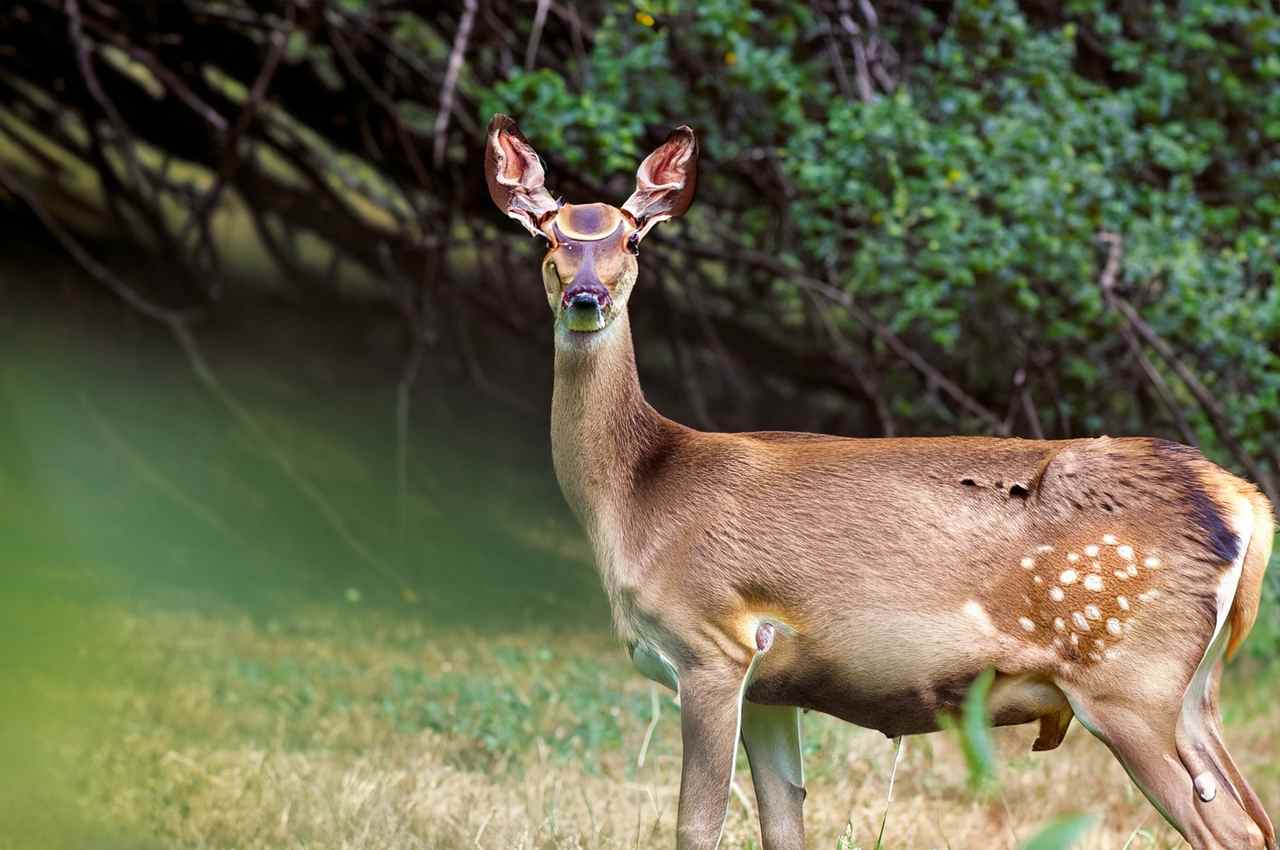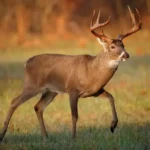Whitetail deer, those graceful creatures that roam fields and forests across North America, have a fascinating life cycle intricately intertwined with the seasons. One of the most remarkable aspects is their gestation period – the time a doe carries a developing fawn. While often simply stated as around 200 days, understanding whitetail gestation goes beyond a single number. It reveals a delicate dance with nature, timed for optimal fawn survival and offering insights valuable to hunters, wildlife enthusiasts, and anyone curious about the natural world.
How Long Are Whitetail Deer Pregnant? Unraveling the Timeline
The average gestation period for a whitetail doe is indeed approximately 200 days, roughly equivalent to 6-7 months. To put it into perspective, that’s about the length of a human pregnancy!
However, just like no two human pregnancies are precisely the same, there’s natural variation in the animal kingdom. Whitetail gestation can range from 180 to 205 days, with some sources citing an even broader span of 180 to 210 days. This variation is perfectly normal and influenced by a fascinating interplay of factors we’ll delve into shortly.
The crucial takeaway is that a whitetail doe carries her fawn for roughly two-thirds of a year. But this timing is far from arbitrary; it’s strategically linked to environmental cues that maximize a fawn’s chances of survival.
Why Timing is Everything: The Significance of Fawning Season
The length of a whitetail deer’s gestation dictates when fawns are born, a period known as fawning season. This typically occurs in late spring or early summer, but the precise timing varies by region, with latitude playing a significant role.
Northern latitudes, with harsher winters and shorter periods of warmth and abundant food, see a more concentrated fawning season, usually peaking in late May or early June. This ensures that vulnerable fawns enter the world when the weather is milder, and food sources are plentiful, maximizing their chances of survival.
Southern latitudes, with milder climates and longer growing seasons, may see a more extended fawning period, stretching from late April to early August. This regional variation highlights how whitetail deer have adapted their reproductive cycles to the specific environmental challenges of their habitats.
Beyond the Average: Factors Influencing Gestation and Fawn Birth
While the average whitetail gestation period hovers around 200 days, several factors can influence when a doe will give birth:
- Latitude: As mentioned earlier, northern deer tend to have a slightly shorter window for fawns to be born before the onset of winter, making precise timing more critical.
- Food Availability: The abundance and nutritional quality of a doe’s diet can subtly influence gestation. Areas with more abundant, high-quality forage may see does giving birth slightly earlier in the season.
- Herd Health: Factors like stress, disease, or poor nutrition within a deer herd can potentially delay fawning. An unusually high number of late-born fawns can be a warning sign of broader herd health or environmental issues.
- Doe Age: While research is ongoing, some studies suggest that younger does may have slightly shorter gestation periods than more mature does, potentially due to differences in their overall body condition and reproductive experience.
The Rut Connection: How Gestation Informs Hunters
For hunters, understanding whitetail gestation is more than just a matter of natural history; it’s a valuable tool for predicting the timing of the rut, the whitetail deer’s breeding season.
Knowing the average gestation period allows hunters to back-calculate from the observed fawning season to estimate when the peak rut likely occurred in the previous year. For example, suppose fawns are consistently observed in an area in late May/early June. In that case, the peak breeding season probably took place around early November.
This knowledge helps hunters plan their hunting strategies. By understanding the rut’s timing, they can better predict deer activity patterns, such as increased movement and vocalizations, increasing their chances of a successful and ethical hunt.
Fawning Season: A Time for Wonder and Responsibility
Fawning season is a magical time in the whitetail deer’s life cycle. Those who’ve witnessed the wobbly first steps of a newborn fawn know the sense of wonder it inspires. But it’s also a time when does and their vulnerable fawns are particularly susceptible to disturbance.
Fawns are born nearly odorless and with an instinctive understanding to lie very still in vegetation, minimizing their chances of detection by predators. This makes them particularly susceptible to accidental disturbance, especially by off-leash dogs or humans who stumble upon a hidden fawn.
Ethical Considerations for Outdoor Enthusiasts
- Keep Dogs Leashed: During fawning season, it’s crucial to keep dogs on leashes, even in areas where they’re typically allowed to roam freely.
- Stay on Trails: Stick to designated trails to minimize the risk of disturbing a doe or her hidden fawn.
- Observe from a Distance: If you’re lucky enough to spot a fawn, admire it from afar. Resist the urge to approach or interact with it.
By understanding the nuances of whitetail deer gestation, fawning season, and the factors influencing them, we gain a deeper appreciation for these remarkable creatures and our role in ensuring their continued well-being.
Looking for More Whimsy in Your Life?
While we’ve delved into the intricacies of whitetail deer reproduction, the natural world is full of fascinating creatures. If you’re looking to bring a touch of the wild into your home, why not consider a giant nutcracker 6ft for a touch of festive cheer or the elegant charm of a giraffe?

















2 thoughts on “Whitetail Deer Gestation: Unveiling the Timing and Factors Shaping Fawn Arrivals”
Comments are closed.